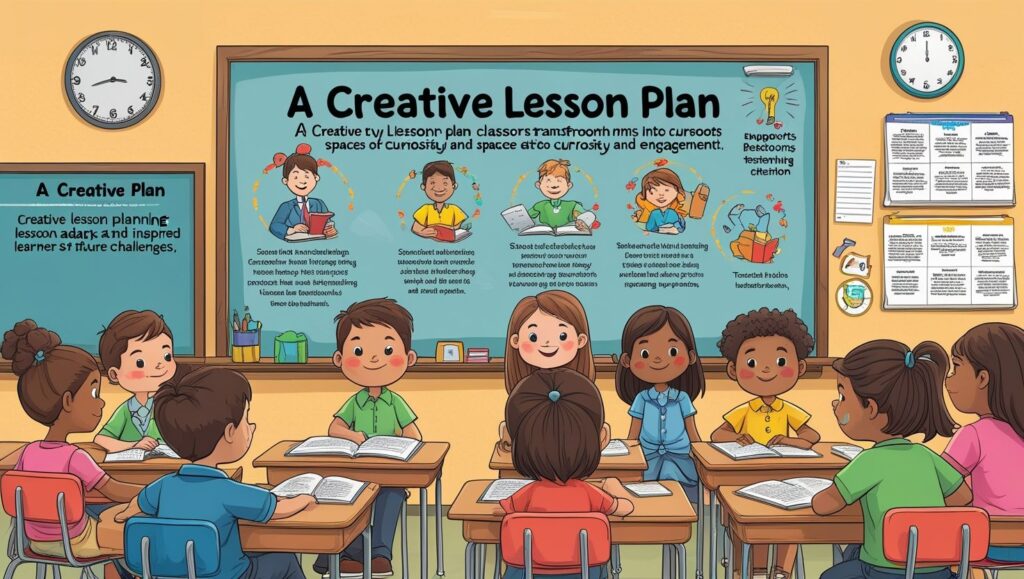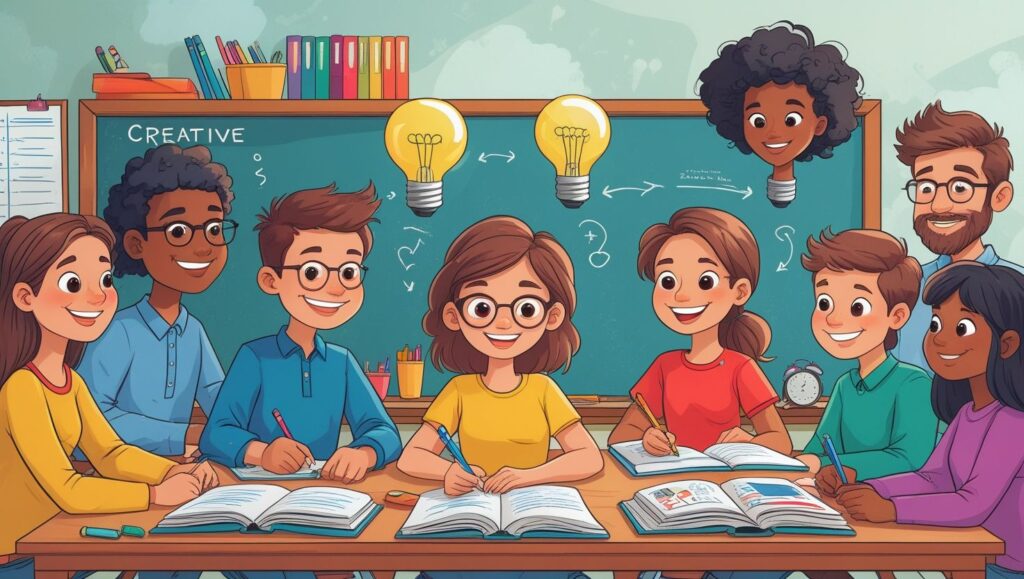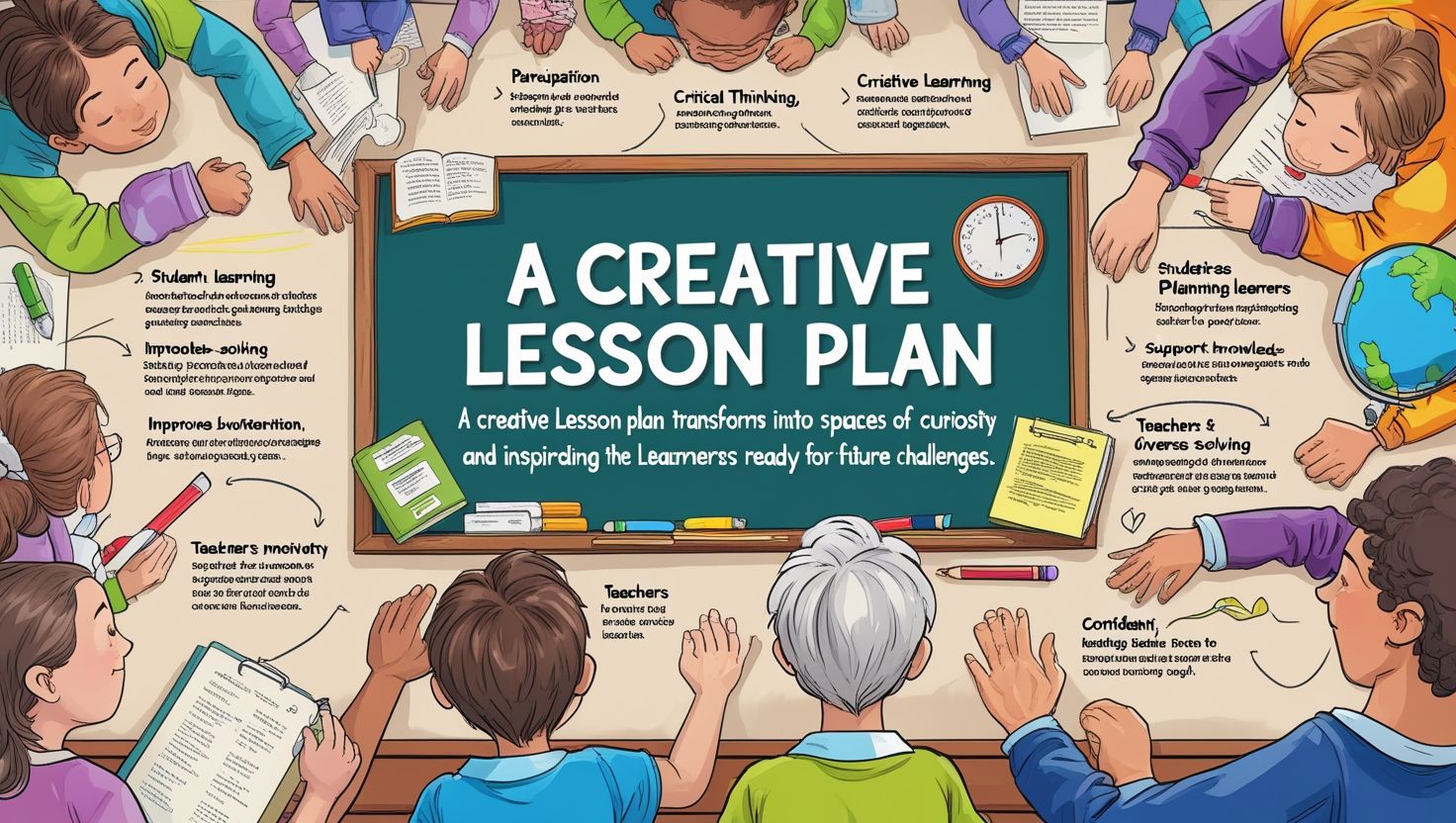Introduction
Impact of Creative Lesson Plan, A creative lesson plan is more than a structured document. It is a tool that connects teachers with learners in meaningful ways. Unlike traditional plans, a creative plan encourages innovation, flexibility, and student engagement. Moreover, it helps teachers shift from routine teaching to inspiring learning. Since students today live in a world full of change, creative teaching becomes essential. In addition, it prepares learners not only for exams but also for real-life challenges.
When teachers design lessons creatively, they combine imagination with practicality. As a result, students become more active participants in the learning process. Furthermore, creativity in planning allows teachers to adjust according to learners’ interests and abilities. In this way, a creative plan ensures inclusivity and motivation. Therefore, understanding the impact of creative lesson planning is vital in modern education. It shapes classrooms into interactive spaces where curiosity, innovation, and collaboration thrive effectively.
Enhancing Student Engagement
One of the greatest impacts of creative lesson plans is increased student engagement. When lessons are designed with creativity, students show higher levels of interest. For instance, teachers can use role play, games, or storytelling to explain concepts. Additionally, creative activities break the monotony of lectures and promote fun learning. Students are encouraged to participate actively rather than passively listening. Moreover, when students see their ideas valued, they feel motivated to contribute more. Teachers who design interactive tasks also address different learning styles, such as visual, auditory, and kinesthetic. Consequently, students feel included and appreciated in the learning journey.
Furthermore, creative lesson plans often include real-life examples that make lessons meaningful. This connection with daily life helps students apply classroom knowledge to real situations. Therefore, creativity in planning does not just deliver content; it transforms learning into an engaging experience. In short, engaged learners are more likely to achieve academic success and personal growth.

Encouraging Critical Thinking
A creative lesson plan also nurtures critical thinking among students. Traditional lessons often focus on memorization, while creative plans emphasize questioning, analysis, and problem-solving. For example, teachers may design case studies, debates, or project-based tasks that require deeper thought. Moreover, students learn to examine information rather than accept it blindly. They compare, contrast, and evaluate different perspectives. This process encourages them to develop their reasoning skills.
Additionally, creative tasks often present open-ended questions that have multiple solutions. As a result, students explore ideas beyond textbook definitions. Furthermore, when learners participate in group discussions or collaborative projects, they sharpen their analytical abilities. They also learn how to respect diverse opinions and defend their arguments logically. Consequently, creativity in lesson planning supports intellectual independence. Students become thinkers rather than just receivers of knowledge. Therefore, the impact of creative lesson planning extends to building lifelong skills that prepare learners for complex situations in education and beyond.
Promoting Collaborative Learning
Another important impact of creative lesson planning is the promotion of collaborative learning. When teachers use group activities, projects, or peer-to-peer teaching, students learn teamwork. Furthermore, they develop communication, leadership, and cooperation skills. A creative plan often includes interactive strategies where learners must rely on each other to succeed. For example, problem-solving activities or group research tasks require collective effort. Moreover, collaboration creates an environment where every student has a role.
This inclusiveness enhances confidence and builds mutual respect. Additionally, students share their strengths and learn from their peers’ perspectives. As a result, the classroom transforms into a community of learners rather than a competition ground. Furthermore, collaboration also reduces isolation among students. They feel connected and supported by their classmates. Therefore, a creative lesson plan not only delivers content but also builds essential social skills. In short, it helps students understand that learning is more effective when shared with others.
Building Teacher Innovation
Creative lesson plans also have a profound impact on teachers. By planning creatively, teachers break free from repetitive teaching methods. They feel motivated to explore innovative techniques. Moreover, lesson design becomes an opportunity for professional growth. Teachers who embrace creativity experiment with digital tools, visual aids, and experiential learning. Additionally, creativity allows teachers to adapt lessons according to classroom dynamics. For example, if students struggle with a concept, teachers can redesign the lesson in a more engaging way.
Furthermore, creative planning increases teachers’ satisfaction, as they see positive responses from students. It also encourages reflective practice, where teachers assess what works best in class. Consequently, teachers develop confidence in handling diverse challenges. In addition, professional innovation through creative planning contributes to improved teaching standards. Therefore, a creative approach to lesson planning empowers teachers to become leaders of change. Ultimately, they inspire both themselves and their students to strive for continuous learning.

Supporting Diverse Learners
A significant impact of creative lesson planning lies in addressing diverse learning needs. Every student has unique abilities, challenges, and preferences. Traditional lesson plans often fail to cater to these differences. However, creative planning integrates multiple teaching strategies. For instance, visual learners may benefit from diagrams and videos, while kinesthetic learners prefer hands-on activities. Moreover, students with needs require inclusive strategies that ensure equal opportunities. Creative plans provide flexible approaches that support all learners.
Furthermore, creative teaching acknowledges cultural differences and values diversity. As a result, students feel respected and included in the classroom. Additionally, teachers can adjust activities based on learners’ pace and skill levels. Consequently, creative planning minimizes barriers to learning. It ensures that no child is left behind. Therefore, the impact of creativity in lesson planning is not just academic success. It also promotes equality, empathy, and inclusivity in education.
Increasing Knowledge Retention
Another vital impact of creative lesson planning is improved knowledge retention. Students often forget information taught through lectures. However, when concepts are explained through creative strategies, learning becomes memorable. For example, dramatization, multimedia, or real-life problem solving helps students connect with content. Moreover, creative activities involve multiple senses, which enhances memory. Additionally, when students actively participate, they internalize knowledge more effectively. For instance, a student solving a real-life math problem remembers the process better than just reading formulas. Furthermore, storytelling techniques used in creative plans make abstract topics relatable.
As a result, students recall information even after long periods. Moreover, creative repetition strategies such as games or quizzes reinforce learning in enjoyable ways. Therefore, creative planning enhances long-term retention of knowledge. This impact not only improves exam performance but also ensures lifelong learning. Ultimately, knowledge gained creatively stays relevant and applicable beyond the classroom.
Encouraging Emotional Development
The impact of creative lesson planning also extends to emotional development. Learning is not just about academics but also about shaping personalities. Creative lessons often include activities that build confidence and self-expression. For example, art projects, public speaking, or role play help students express emotions freely. Moreover, students learn resilience when facing challenges in creative tasks. They realize that mistakes are part of growth. Additionally, creative lessons provide safe spaces where students can share their thoughts without fear of judgment. This process reduces stress and anxiety in the classroom. Furthermore, when teachers appreciate creative efforts, students feel valued.
As a result, their self-esteem improves. Creative plans also encourage empathy, as students work together and respect different viewpoints. Consequently, learners develop social and emotional intelligence. Therefore, creative planning supports holistic development, where emotions and intellect grow together. This balance is crucial for building well-rounded individuals ready for future challenges.

Strengthening Problem-Solving Skills
A creative lesson plan significantly strengthens problem-solving skills. Students are frequently exposed to real-life scenarios where they must think critically. For instance, teachers may present environmental issues, business cases, or scientific experiments. Moreover, instead of providing ready-made answers, teachers guide students to discover solutions. This process builds independence and resourcefulness. Additionally, creative lessons encourage trial and error, which develops resilience. Students learn that problems may have multiple solutions and that creativity helps in finding them.
Furthermore, collaborative problem-solving allows learners to combine different perspectives. As a result, they understand the importance of teamwork in tackling challenges. Moreover, problem-solving exercises improve decision-making, which is vital in personal and professional life. Consequently, the impact of creative lesson planning goes far beyond classroom success. It prepares students to handle complex global issues with confidence. Therefore, developing problem-solving through creativity is essential for 21st-century learning.
Conclusion
In conclusion, the impact of creative lesson planning is profound and multi-dimensional. It enhances engagement, nurtures critical thinking, and promotes collaboration. Furthermore, it empowers teachers, supports diverse learners, and improves knowledge retention. It also fosters emotional growth and strengthens problem-solving skills. Therefore, creative lesson plans are not just teaching tools but transformative frameworks. They ensure learning is active, inclusive, and meaningful.
Moreover, they prepare students for both academic success and life challenges. Teachers who design creative plans inspire innovation and curiosity. As a result, classrooms become lively spaces of discovery. Ultimately, creativity in planning shapes not only lessons but also futures. It builds confident, thoughtful, and adaptable learners. Hence, investing in creative lesson planning is investing in the future of education.
References
- Sawyer, R. K. (2011). Explaining Creativity: The Science of Human Innovation. Oxford University Press.
- Robinson, K. (2015). Creative Schools: The Grassroots Revolution That’s Transforming Education. Penguin.
- Eisner, E. W. (2002). The Arts and the Creation of Mind. Yale University Press.
- Craft, A. (2005). Creativity in Schools: Tensions and Dilemmas. Routledge.
- Guilford, J. P. (1967). The Nature of Human Intelligence. McGraw-Hill.

This is such a valuable article! I really like how you’ve managed to explain the topic in a clear and practical way—it feels authentic and easy to relate to. Reading it gave me some new perspectives that I can actually apply. I’m especially interested in content like this because at meinestadtkleinanzeigen.de we’re running a classifieds and directory platform in Germany that connects people with services, businesses, and opportunities across many categories. Insights like yours remind me how powerful it is when knowledge and connections come together. Thanks for sharing—looking forward to more of your work!
This is such a valuable article! I really like how you’ve managed to explain the topic in a clear and practical way—it feels authentic and easy to relate to. Reading it gave me some new perspectives that I can actually apply. I’m especially interested in content like this because at meinestadtkleinanzeigen.de we’re running a classifieds and directory platform in Germany that connects people with services, businesses, and opportunities across many categories. Insights like yours remind me how powerful it is when knowledge and connections come together. Thanks for sharing—looking forward to more of your work!